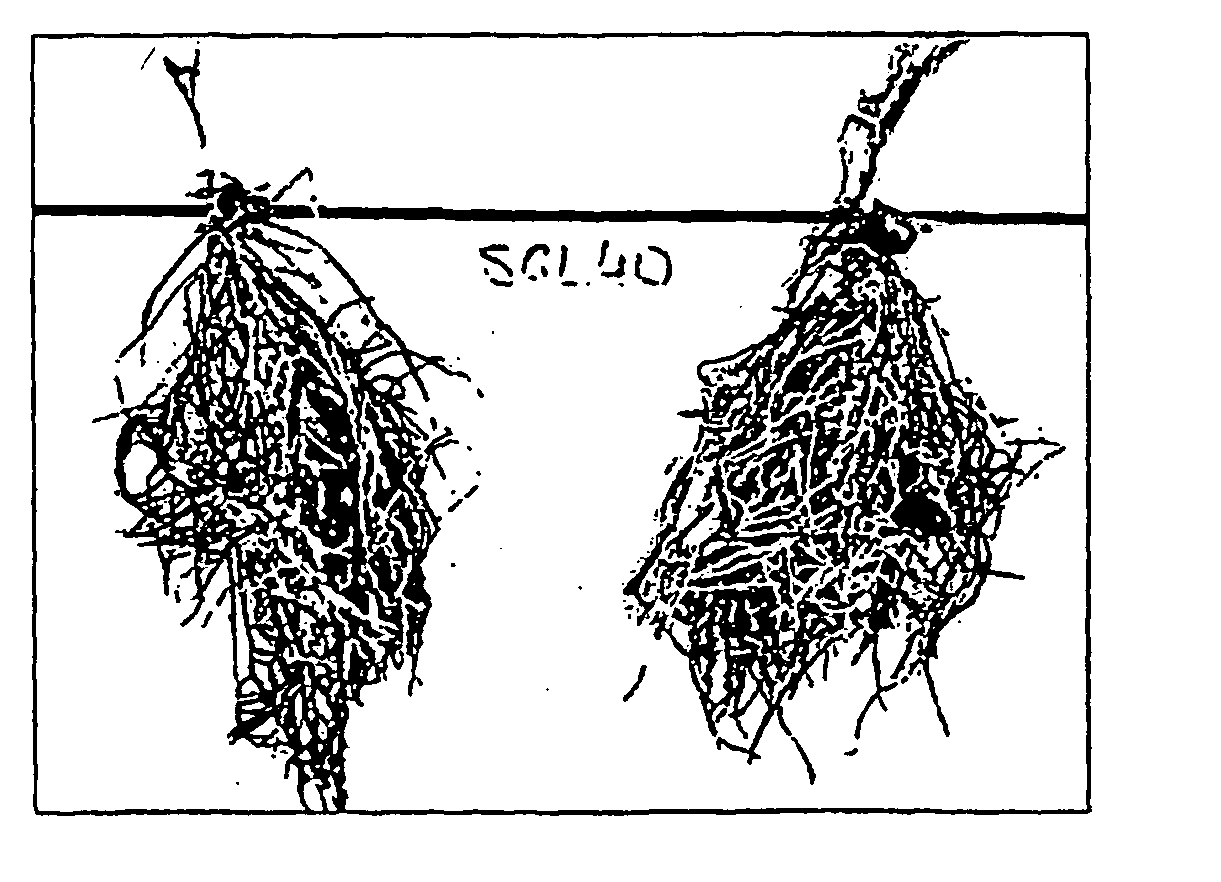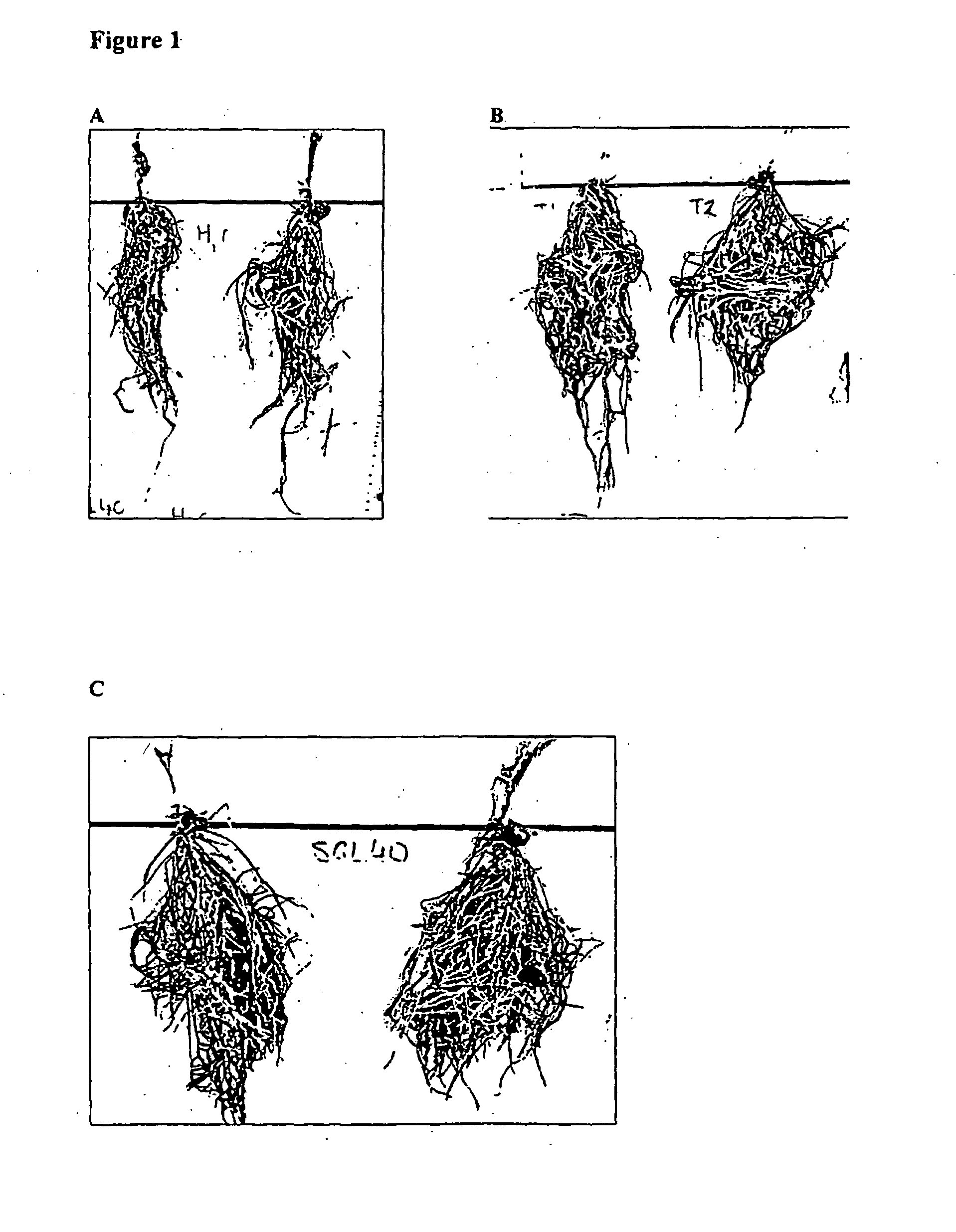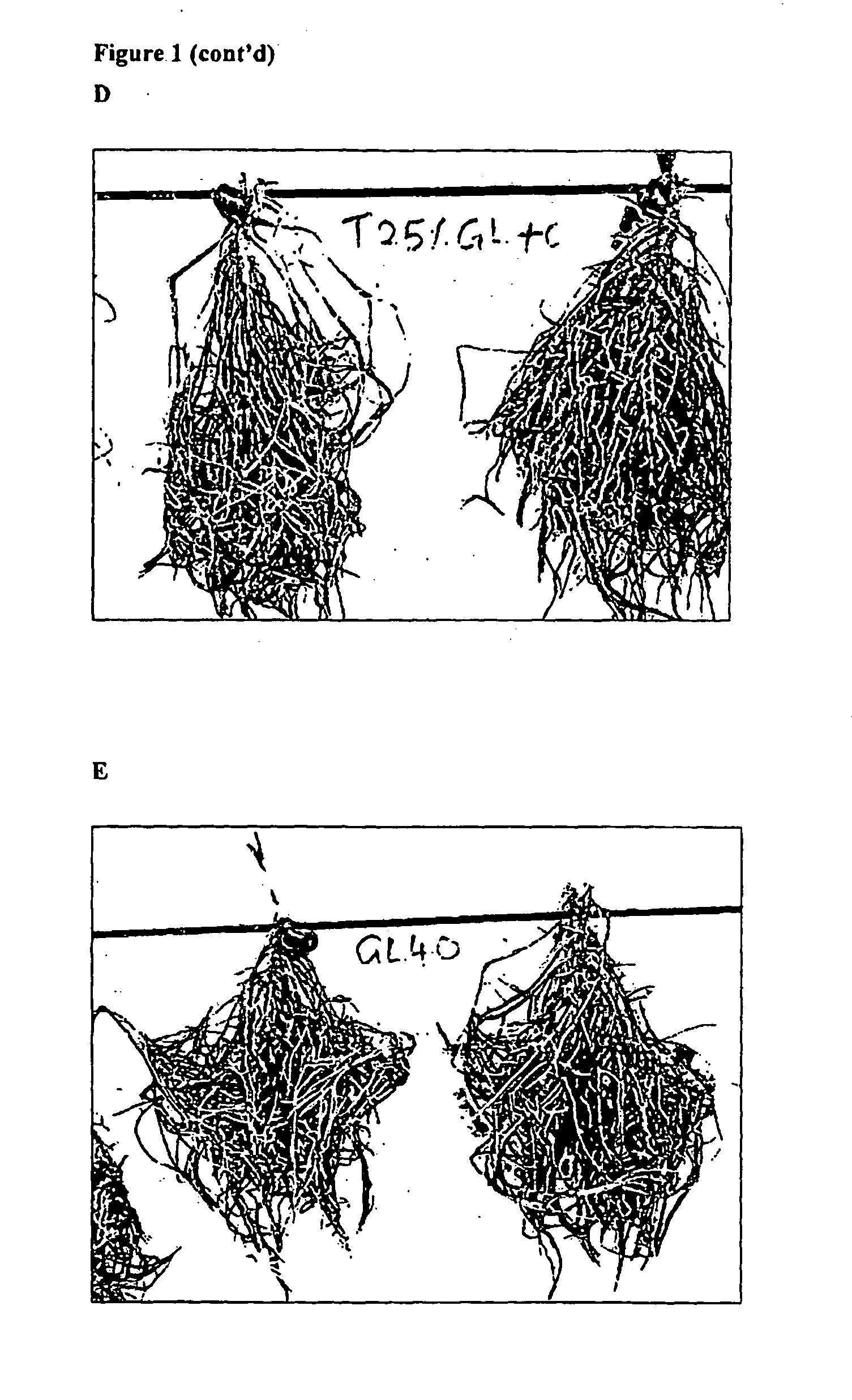Microbial inoculants and fertilizer compositions comprising the same
- Summary
- Abstract
- Description
- Claims
- Application Information
AI Technical Summary
Benefits of technology
Problems solved by technology
Method used
Image
Examples
example 1
Microbial Strains
[0065]The following microbial strains were used in the production of a biofertilizer.
[0066]Lactobacillus parafarraginis Lp18 was isolated from an environmental source. Partial 16S rRNA sequencing indicated 100% similarity to Lactobacillus parafarraginis AB 262735 which has a risk group of 1 (TRBA). When cultured on MRS media for 3 days at 34° C., anaerobically, Lp18 produces cream, round, slight sheen, convex, colony diameter 1-2 mm (facultative anaerobe). Its microscopic appearance is Gram positive, non-motile, short rods rectangular, mainly diploid. Lactobacillus parafarraginis Lp18 was deposited with the National Measurement Institute, Australia on 27 Oct. 2011 under Accession Number V11 / 022945.
[0067]Lactobacillus buchneri Lb23 was isolated from an environmental source. Partial 16S rRNA sequencing indicated 99% similarity to Lactobacillus buchneri AB 429368 which has a risk group of 1 (TRBA). When cultured on MRS media for 4 days at 34° C., anaerobically, Lb23 pr...
example 2
Pasture Trials
[0079]Field trials on pasture were conducted using a biofertlizer as disclosed herein, in comparison to untreated pasture and pasture treated with conventional inorganic fertilizers.
[0080]The biofertilizer (hereinafter “IMP Bio”) comprised the six microbial strains listed in Example 1, at final concentrations of 2.5×105 cfu / ml for each of the Lactobacillus strains, 1.0×105 cfu / ml for Candida ethanolica and 1.0×106 cfu / ml for Acetobacter fabarum. The strains were grown as described in Example 1 and mixed with 2% trace elements, 0.3% humate (Soluble Humate, Lawrie Co), 3% molasses and 0.1-0.2% phosphoric acid. Phosphoric acid was added to the point where pH was in the range 3.8 to 4.0. The trace elements component typically comprised the following (per 1,000 L):
TABLE 1Trace elements component of biofertilizerMaterialVolume (kg)Water200kgPotassium Sulphate15.25kgCopper Complex125.6kgMagnesium Citrate2175.0kgChromium Citrate310.0kgCalcium Sokolate452.0kgCitric Acid11.15kgF...
example 3
[0087]To determine the effect of a biofertilizer as disclosed herein on soil quality, 2×150 g of soil from a farm in Tasmania were each weighed into 2× clean 150 ml Schott bottle. 10 mls of a 1:10 dilution of IMP Bio fertilizer (see Examples 1 and 2) was dripped over the top of the soil in one bottle and the lid replaced and incubated at 34° C. for one week. The second bottle had no biofertilizer added was incubated 34° C. The soil from both bottles was analysed by Environmental Analytical Laboratories (EAL, Southern Cross University Lismore, NSW) using standard soil testing methods.
[0088]The results for the one week treatment of soil with IMP Bio are summarised in Table 4. Soil tests on the untreated incubated sample are not shown as these were substantially the same as the initial untreated soil test. It is clear from the soil tests on the two treated samples that there is a marked difference in the soil after incubation with IMP Bio. The second sample analysed, shows ...
PUM
 Login to View More
Login to View More Abstract
Description
Claims
Application Information
 Login to View More
Login to View More - R&D
- Intellectual Property
- Life Sciences
- Materials
- Tech Scout
- Unparalleled Data Quality
- Higher Quality Content
- 60% Fewer Hallucinations
Browse by: Latest US Patents, China's latest patents, Technical Efficacy Thesaurus, Application Domain, Technology Topic, Popular Technical Reports.
© 2025 PatSnap. All rights reserved.Legal|Privacy policy|Modern Slavery Act Transparency Statement|Sitemap|About US| Contact US: help@patsnap.com



